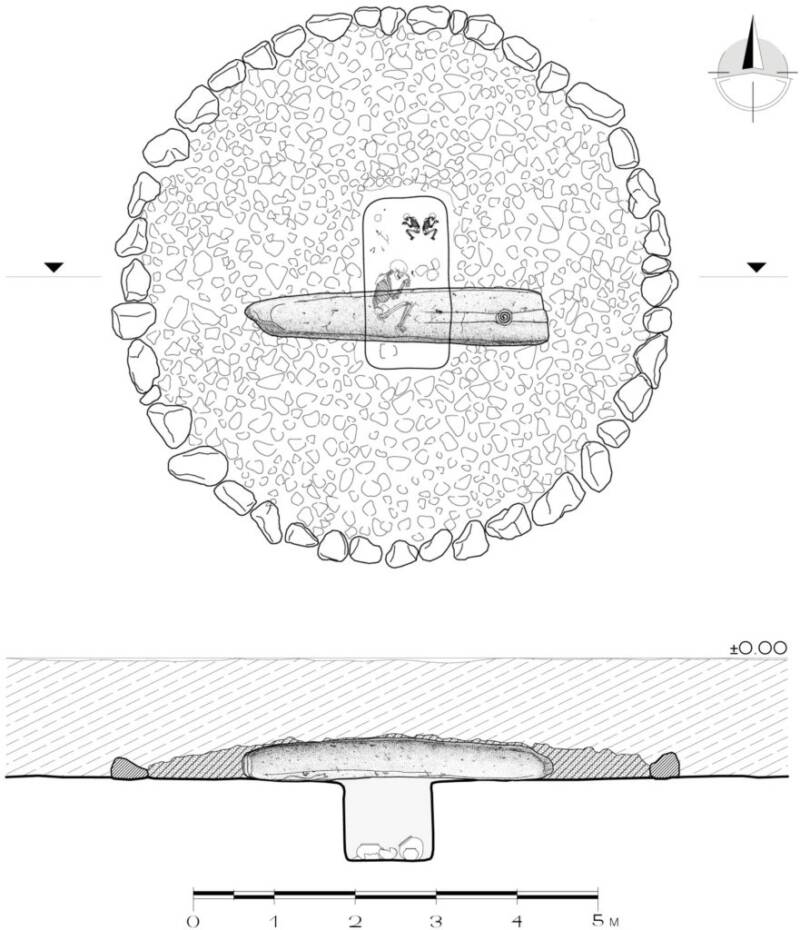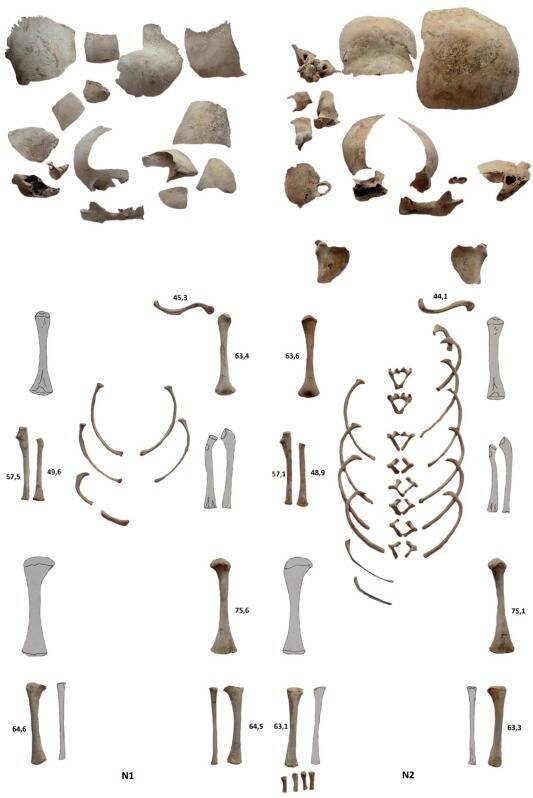Though their story remains largely shrouded in mystery, experts suspect that the newborns were a rare type of twins in which each baby has a different father — and that they were ritualistically sacrificed.

A. HakhverdyanThe ten-foot dragon stone dating to the 16th century B.C.E. that was found with two infants buried just below it.
In 1980, workers installing a water pipe in Lchashen, Armenia, came across a dragon stone, a basalt monolith erected by ancient people in the region. The stone was placed atop a burial chamber, and researchers collected several items from within the chamber. But they missed one thing: the skeletal remains of two closely related infant girls.
Now, a new study has investigated the remains of the infants buried under the dragon stone. Such a burial, they noted, is both “rare” and “unique.” And there may be a surprising reason behind it.
The Bronze Age Infants Found Under The Dragon Stone
The story of the infants and the dragon stone began when workers laying pipes in Lchashen first identified the stone and the burial chamber beneath. Such stones, called vishapakar, are basalt monoliths carved with animal imagery that are often found in the mountain meadows of Armenia. Some 150 have been discovered to date.
Archaeologists who examined the site found that the burial chamber was filled with a number of objects, including the remains of an adult woman and items like pottery, a bronze hair pin, a bead, a bone needle, and a fragment of obsidian. They studied the site, documented it, then transported the stone and the burial chamber items to the Metsamor Historical-Archaeological Museum Reserve, where the dragon stone was re-erected.
But they apparently missed one thing. According to a new study of the objects found in the burial chamber which was recently published in the Journal of Archaeological Science: Reports, the burial chamber also included the remains of two infants. This was “not accounted for in the original publication.”

A. HakhverdyanA reconstruction of the burial chamber, which included both an adult woman and two female infants.
Although the remains of the adult woman have since been lost, researchers were able to test the DNA of the two infants, who were buried between the ages of zero and two months. They found that the infants had “a second degree relationship,” which is found in people who are “half-sisters, aunt-niece, double-cousins, or grandparent-grandchild.”
However, archaeologists are still puzzling over what this burial beneath a dragon stone might mean. They’ve even floated a surprising theory as to why the girls were buried beneath the stone.
The Elusive Meaning Behind This Dragon Stone Burial
According to the study, the burials of children in Late Bronze Age Armenia — and at Lchashen in particular — are “rare.” The burial of two infants under the dragon stone is “unique.”

H. SimonyanThe bones of the two infant girls that were discovered under the dragon stone.
“In the South Caucasus, stelae are sometimes used to mark graves,” the study’s authors remarked, “However, out of 454 Bronze Age graves excavated at Lchashen, not one was marked by any kind of stelae. Only this grave was marked with a dragon stone.”
So why were the infants buried in such a way?
Researchers don’t believe that the burial chamber represented any kind of multigenerational tomb, as such a tomb has not been documented “among the over 400 tombs excavated at Late Bronze Age Lchashen” and because it lacks features like an entrance. Thus, it’s likely that the infants were buried at the same time.
This could possibly be because they were members of the same family who died at the same time. Likewise, it could even be possible that the girls were a rare type of twin resulting from heteropaternal superfecundation, which is when a woman becomes pregnant with twins from the sperm of different men. This would explain why they had a second-degree relationship.
If so, it could also explain the dragon stone.

Wikimedia CommonsAnother group of dragon stones found in Metsamor, Armenia.
“We hypothesize that the stela was put on this tomb because the twin children were considered extraordinary, a phenomenon which could have enhanced the uniqueness of the event,” the study’s authors explain.
In this scenario, the twins could have died at birth or they could have been sacrificed. The study’s authors note that “although no direct traces of violence were detected on the fragile infant remains… The killing of twins at birth is a wide-spread cultural phenomenon.”
For now, the burial remains an intriguing mystery. But it offers a hint of how people in Bronze Age Armenia would have mourned their dead.
After reading about the infants discovered under a dragon stone in Armenia, discover the heroic story of Shavarsh Karapetyan, the Armenian swimmer who saved 20 people from a sinking trolleybus in 1976. Then, see haunting photos from the Armenian Genocide.





